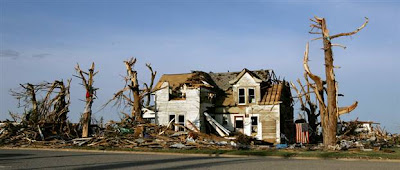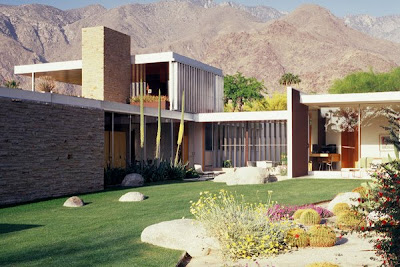Here, and micro and nano here. Here and turbines, and fotoyacheyki. And yet - the army of microbes, cure damage to the structure. Taken together, the same - ekobashnya, on the appearance of which in any way for that not to guess about her appointment. Until podbereshsya for most of its walls. Come and we will. Suppose that we are still only a fantasy.
London designer Agustin Otegui Mexican origin with both hands for cleaner sources of energy (because there is no other way "), only now he does not like the trend towards gigantomanii in this field.
Here and there appear huge building projects with a titanic windmills at the top, house, cover photovoltaic panels, and entire fields of solar panels, extending to the horizon. Pro wind-mills stometrovoy height, has long become a "decoration" idyllic rural landscapes in several countries - and to say no.
Agustín asks: "Why not start thinking about a small scale and apply the" green innovation "to the existing buildings and structures (bridges and tunnels)?
Sound idea - try to write the same windmills and solar panels in the shape of the buildings so as to get the most organically and imperceptibly. In one form or another have already tried this trick done many times, but Oteguy brought the idea to its logical conclusion - he invented a system for collecting energy gratuitous (and at the same time - of greenhouse CO2), could merge with the building so that when they look at the construction has meters with twenty you do not suspect.
Thus was born Project Nano Vent-Skin.
The basis of this "skin" - a network with rectangular cells to a few centimeters across. An nanoprovodov of it (probably means the wires, made by a large number of nanotubes plexus). And they need not only for the transfer of energy.
Wires played the role of axes for a myriad of tiny wind turbinok located on the sides of each cell. The length of one such micro (gelikoidnoy forms) is 25, and diameter - 10,8 mm.
The outer surface of each turbine is covered with photovoltaic film on the basis of organic matter.
The large (about several meters) pieces of such a network must be tight on the metal frame, and has large clusters of these builders will be able to make the building walls.
Two sources of energy - light and wind - use a "skin" at the same time, to supply electricity to the network. At the same time issued a wall Nano Vent-Skin is smooth and one-, but from inside, through which you can easily overlook the neighborhood.
Augustin believes that "nanokozha" the ability to decorate the original towers and houses (one of these structures, painted a designer, you can see in the picture), but it is also useful for the upgrade of existing buildings.
It is safe to say that in such a project Agustin difficult, but feasible. Is that nanoprovoda greater reality to the vision necessary to replace the conventional conductors. But we met only a half idea. The second looks more fantastic.
Oteguy "filled" column each mikrovetryaka bioengineered microorganisms, which should, in his conception, to capture light and use the energy for their growth and reproduction, as well as - the repair of the turbines.
Bacteria are responsible for the self-element "skin". They take carbon from the air, where there is enough "harmful" for carbon dioxide. In this regard, green tower with Nano Vent-Skin will be similar to plants: healing environments.
Interestingly, the designer has built a plastic modelku its grid, so even thought (computer models), as these will turbinki flows around the air.
In the corners of each major bloc nanokozhi "batteries are accumulating energy collected by the tower.
It also hosted sensors that determine the failure of small turbinok.
A supply of materials necessary "skin" for samoremonta is contained in the same network nodes. If necessary "nutrients" are delivered to turbinkam of tube around nanoprovodniki.
As we see, Oteguy not poskupilsya on "emerging technologies". But in the very very early to write utopian project.
Recall that in the walls of laboratories, has long vyzrevayut technologies and materials, something similar to that introduced in the Nano Vent-Skin a British artist.
So, maybe in twenty years, Nano Vent-Skin translate into reality? Do not undertake to predict. But let's say that the project has the right to life if only because of its nice view.
And because there is something fascinating in that to get to the tower, and suddenly found that its green wall is actually translucent, and drawn from the army of tiny turbinok.
And what with the carbon dioxide? Perhaps, even a thousand towers type Nano Vent-Skin does not have on the global balance of CO2 even any noticeable impact. And ten thousand, too.
And the Watchtower of the stores get good. They will be self-sufficient in energy for lighting at night, as they say, in the latest fashion.
Becoming a magnet for tourists, such towers may indirectly help the cause of ecology. Look, some of the visitors entered the beauty of the project, the next time switch off at home unwanted light.





 Il “prezzo certo” è senz’altro uno dei principali punti di forza delle
Il “prezzo certo” è senz’altro uno dei principali punti di forza delle 
 Il fatto che molte
Il fatto che molte 







































